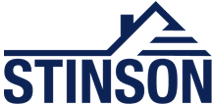
As a homeowner it is important to understand the basics of a home. Stinson Services, Inc., a licensed Minnesota Contractor, will go into the basics of the roof and what each part does to help a home shed water and stay comfortable. Homeowners that have the basic knowledge of their roofing system are able to make educated decisions on their roofing repairs and ensure that they’re doing what is best for their home.
Basic Roofing Composition
Rake – The rake of your house is the edge in which water DOES NOT drain off. The edge of the house is either considered a rake or the eave of the house.
Eave – The eave of your house is the edge in which the water DOES drain off. The eave should have factory cut edges from the roofing material (typically shingles).
Ridge & Hip – The top of your house where two planes of your roof create a single line. This is the main sector of the house. Other smaller ridges are called “hips”. (Not shown in diagram.)
Plumbing Vent – Plumbing vents are required for almost all plumbing fixtures in your house. Most of the time these fixtures are connected to reduce the number of penetrations in the roof. A plumbing vent is necessary to keep your plumbing traps from being siphoned or having sewer gas enter your home. (Read more on plumbing vents.)
Skylight – A skylight is a window that is installed into a roof or ceiling. Skylights are a great way to light up a room with natural light. They also provide a way to heat/cool particular rooms. Professional placement of skylights should be considered when installing a skylight. (Read more on skylights.)
Skylight Saddle – The saddle is a particular flashing fit for your skylight.
Chimney – The chimney is a structure that provides ventilation for smoke and gases created by stoves, furnaces, or fireplaces inside your home.
Step Flashing – Step flashing is small individual pieces of sheet metal used to direct water away from walls, chimneys, dormers, and other protrusions along the house. These pieces are overlapped and stepped up vertically up the wall. This ensures water won’t get underneath the flashing.
Attic Vent – Attic vents allow heat from the attic to escape the house. It’s important to ventilate your home in order to maintain temperatures and prevent structure damage due to moisture buildup. (Read more on ventilation.)
What’s Under Your Shingles?

Underlayment – The layer of protection between your roofing shingle and roof deck. The underlayment is typically a rubberized asphalt material or newly founded synthetic material. Underlayment is the main water barrier protecting your wood deck board.
Roof Deck – The roof deck is typically a plywood or OSB wood panel that covers the entire rooftop. Roof decking panels are an important feature to your home’s structure. The roof deck is protected by the underlayment and shingles. A healthy roof deck is crucial when considering a home’s structure.


0 Comments